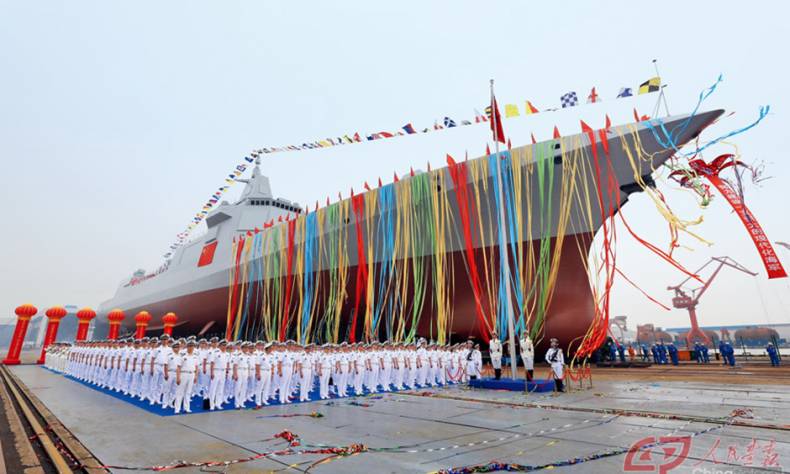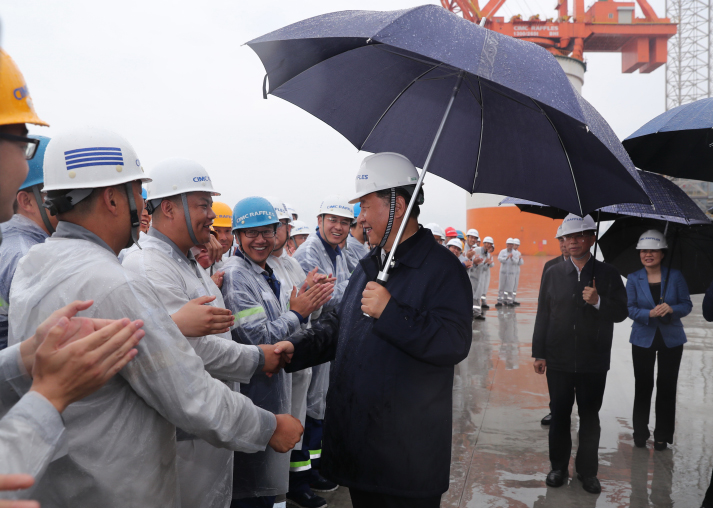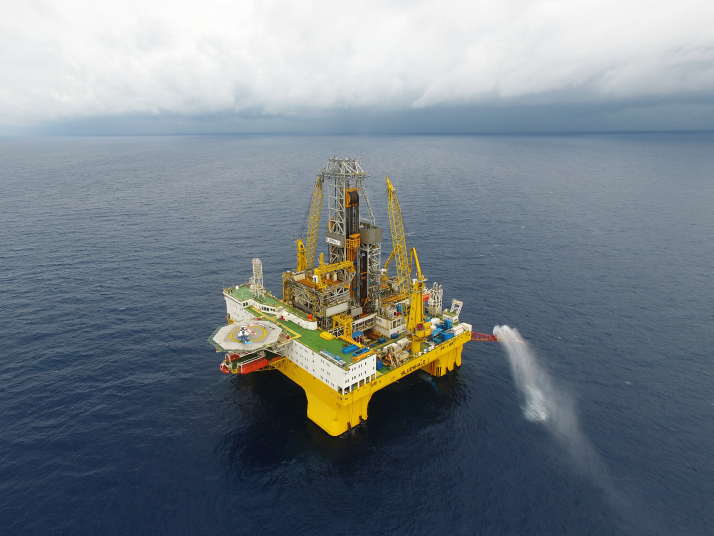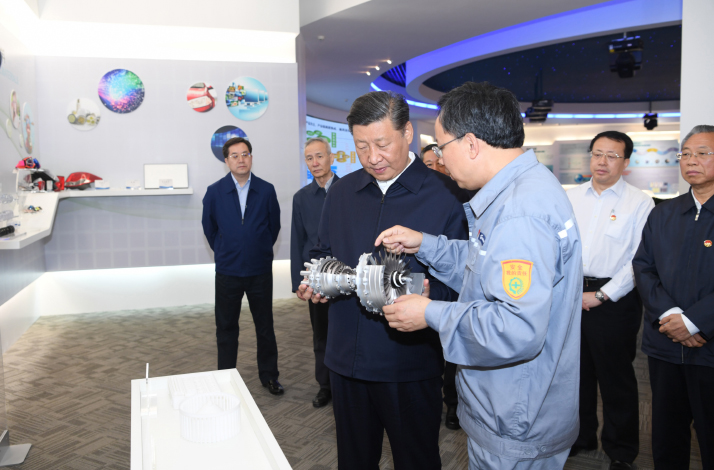
Tapping Into the Sea
Chinese President Xi Jinping embarked on an inspection tour of the province, visiting historic sites, marine labs, state-owned enterprises (SOEs) and villages in east China’s Shandong Province.
– Shandong takes the initiative in China’s drive toward a strong maritime economy
By Yuan Yuan
After the 18th Shanghai Cooperation Organization Summit in the coastal city of Qingdao, east China’s Shandong Province, Chinese President Xi Jinping embarked on an inspection tour of the province, visiting historic sites, marine labs, state-owned enterprises (SOEs) and villages. It was his second inspection tour of the province since taking office in 2012.
Shandong, literally meaning “east of the mountain,” is mostly known as a major agricultural province located in the east of the country. Its rich marine resources—with a coastal area of 159,000 square km and a coastline of 3,345 km that accounts for one sixth of the country’s total—have been overlooked until recent years when China started to make efforts to enhance its maritime strength. The coastal advantages of the province have thus been thrust into the limelight.
Δ President Xi Jinping visits a CIMC Raffles base during an inspection tour in Yantai, Shandong Province, on June 13 (XINHUA)
Marine Development
The Qingdao National Laboratory for Marine Science and Technology (QNLM), the first place that Xi visited during his tour, was launched in 2015 and focuses on basic research as well as the research and development (R&D) of cutting-edge technologies related to marine science.
With a total investment of 1.3 billion yuan ($200 million), the site covers an area of 150,000 square meters and has eight main labs involved in research ranging from marine and climate change to the evolution and protection of marine environments, and sustainable use of marine biological resources. It aims to become a world-class comprehensive marine research center and an open platform for collaborative innovation.
Xi reviewed the major frontier sciences, the independent R&D of marine high-end equipment, as well as the promotion of military-civilian integration at QNLM. Two academicians from the Chinese Academy of Engineering working in the lab shared their marine dreams with Xi.
“I told the president that a new marine drug is very likely to be developed by China,” Guan Huashi, one of the academicians, said. The new drug, HS971, for the treatment of senile dementia, is expected to complete its tests next month.
As the developer of propylene glycol alginate sodium sulfate (PSS), a marine drug that has been commonly used as a heparinoid for the treatment of ischemic cerebrovascular and hyperlipidemia diseases in China for nearly 30 years, Guan explained that China has two ways of developing marine drugs. One is to follow the R&D method in Western countries and the other is to follow traditional Chinese medicine, which is a uniquely Chinese method.
“My dream is to build China’s first ‘blue drugstore’,” Guan said.
Wu Lixin, another academician introduced China’s exploration of deep-sea resources and said the lab now is collaborating with scientists around the world to develop marine and climate broadcasting systems.
“To build China into a strong maritime country is our dream, which can’t be achieved by just a few scientists,” said Liu Baohua, QNLM Deputy Director. Liu said the lab has established an ocean-drilling research vessel-sharing platform to allow scientists all over the country to use the vessels through an application. “This is a strong support for young scientists who want to go deep into the ocean but can’t get access to such vessels,” Liu said.
Xi also visited the Yantai CIMC Raffles on June 13. He inspected submerged oil drilling platforms and other marine engineering equipment manufactured by the company. Bluewhale 1, the ultra-deep-water, semisubmersible, drilling rig built by the firm conducted successful tests in the South China Sea in May 2017. As the world’s most advanced ocean-drilling design, the platform has the greatest operating and drilling depth in the world and can take part in deep-sea operations across the world. This is China’s first success in mining flammable ice at sea, showing that China has mastered combustible ice mining technology.
According to the National Construction Plan for Marine Ranch Demonstration Zone for 2017 to 2025, unveiled on December 5, 2017, by the Ministry of Agriculture, China is planning to build 178 national marine ranch demonstration zones, including in five districts in Yantai.
The city rolled out strategies to develop offshore marine ranch equipment such as multi-functional ocean ranch platforms and an intelligent, informative and diversified management system. Furthermore, the city of Yantai will explore more technological cooperation opportunities with countries and regions along the Belt and Road and make efforts to facilitate the signing of an agreement for an Arctic offshore drilling complex project with Russia.
Δ Bluewhale 1, developed by Yantai CIMC Raffles, is in experimental operation in China’s South Sea on May 16, 2017 (XINHUA)
History and Innovation
The Belt and Road Initiative is a golden opportunity for the province to develop its marine resources. Penglai, a county-level city in the wider Yantai area, used to be a starting point for the ancient maritime Silk Road. Xi visited Penglai on June 13 and noted that China’s ancient, modern and contemporary history is a valuable Chinese treasure.
He called on Chinese officials to learn more about the country’s history and draw lessons from it, urging protection for
important national cultural relics so that they can be passed down from generation to generation.
In 2011, the Yantai-based Wanhua Industrial Group merged with Hungary’s BorsodChem, a leading European producer of MDI, TDI and PVC resins. The merger strengthened the China-Hungary BorsodChem Foreign Economic and Trade Cooperation Zone. To date, it is China’s largest investment project in Central and Eastern Europe, making Hungary the first country in the European Union to have signed a Belt and Road cooperation agreement with China.
With a 40-year history, Wanhua went through hard times at the beginning with technology serving as an obstacle to its development. “All the advanced technologies were in the hands of developed countries in those days,” Liao Zengtai, President of Wanhua, said. “We realized that without self-developed technologies, we would have no future.”
Since the late 1990s, Wanhua started to reform the company, attracting talent through multiple means. Now it has developed into the world’s leading MDI producers. “We will further deepen the reform of the company and expand our business globally,” Liao added.
Δ President Xi Jinping visits a Wanhua Chemical industrial park during an inspection tour in Yantai, East China’s Shandong Province, on June 13(XINHUA)
In addition, “chemical enterprises must follow the rules of ecological protection and explore high quality development,” Liao said. “As President Xi said, lucid waters and lush mountains are invaluable assets. We will adopt world-class technologies and promote a new level of green development in Wanhua.”
Xi stressed the importance of ecological protection while visiting an ecological restoration project in Weihai. The project, conducted by the Huaxia Group located in Weihai. It has turned a bare quarry into a scenic spot with vegetation over the past decade.
Xi commented positively on the group’s efforts to help increase local villagers’ incomes by promoting tourism through the ecological restoration project. He emphasized that a good economic environment is an important foundation for the healthy development of the economy and society.
While visiting a high-end fault tolerant computer production base developed by the Inspur Group at the Jinan hi-tech zone in the capital city of Shandong on June 14, Xi said that central SOEs in particular must strengthen their independent innovation capacity and develop more advanced equipment for the country.
Rural vitalization was the highlight during the president’s inspection tour. As of March 9, when Xi attended a panel discussion with deputies to the National People’s Congress from Shandong Province at the Great Hall of the People in Beijing, he highlighted the importance of revitalizing the country’s rural areas, a point he stresses while visiting Sanjianxi Village in Jinan.
After hearing the work reports by the Communist Party of China Shandong Provincial Committee and government of Shandong Province on June 14, Xi said that as a major agricultural province, it is Shandong’s responsibility to ensure the grain security of the country. More efforts should be made to ensure grain production, optimize agricultural structure, increase farmer’s income, win the battle against poverty, implement the rural vitalization strategy and develop Shandong into a model of rural vitalization.
Xi also called for efforts to implement a new vision of development in order to achieve high-quality growth, boost the ability of innovation in economic and social development, and satisfy people’s ever growing needs for a better life.
Source: Beijing Review
 Facebook
Facebook
 Twitter
Twitter
 Linkedin
Linkedin
 Google +
Google +













